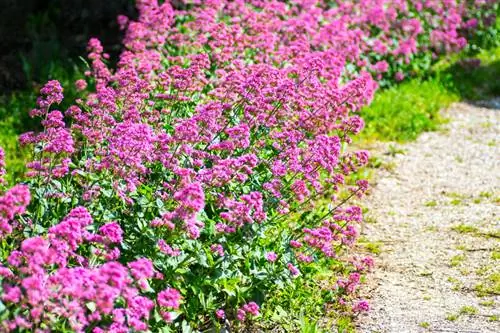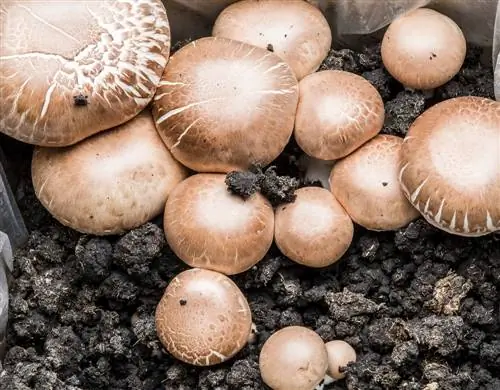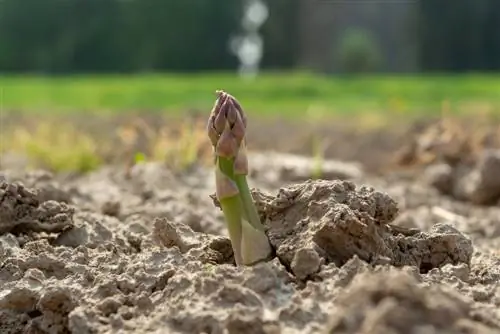- Author admin [email protected].
- Public 2023-12-16 16:46.
- Last modified 2025-01-23 11:20.
The spur flower (Centranthus) is a popular garden plant that, due to its widespread expansion, can now be counted among the so-called “wild species” in Central Europe. Caring for the spur flower in the garden is relatively uncomplicated, and the hardy spur flower is easy to propagate.

How can you successfully propagate spur flowers?
The spur flower (Centranthus) is easy to propagate, either by sowing from April to September in various garden soils or by dividing older specimens in spring. Self-sowing is also possible if seeds are allowed to mature.
Under suitable conditions, numerous offspring are formed
In a location with sufficient sunlight and without waterlogging, the spur flower produces numerous, magnificent flowers. For example, in the widespread subspecies “Centranthus ruber”, these shine in a bright red tone that is visible from afar. If the seeds resulting from the wilted flowers reach full maturity, the spur flower usually self-sows relatively vigorously. If you do not want this “uncontrolled” self-sowing in your garden, you must cut off the flowers in good time after the flowering period so that the seeds cannot ripen.
Propagate the spur flower by sowing
Propagation of the spur flower by sowing is usually successful in a wide variety of garden soils if you have collected the seeds when they are fully ripe or purchased from specialist retailers (€2.00 on Amazon). The possible time frame for sowing the seeds is from April to September. Planting in spring can result in the first inflorescences in the same year, but plants sown late in the year will not bloom until the following year. Centranthus is one of the normal germinators whose seeds should be thinly covered with soil in the bed and kept evenly moist.
The division of larger specimens for propagation purposes
Older specimens can be dug up in spring for propagation purposes and easily divided in the root area with a sharp spade. When using this method, pay attention to the following things:
- plant the freshly divided plants back in the new location as soon as possible
- water the divided and newly planted Centranthus specimens sufficiently in the beginning
- not to divide the roots into too small parts
Even if it is tempting to get as many offshoots of the spur flower as possible at once, divisions that are too small should be avoided. However, simply dividing an older Centranthus specimen does help the plant to sprout particularly strongly and vigorously again due to the growth impulse.
Tip
Theoretically, it is also possible to grow new spur flowers from cuttings. However, this propagation method is less important than dividing and sowing, as strong plants can also be produced easily in both ways.






